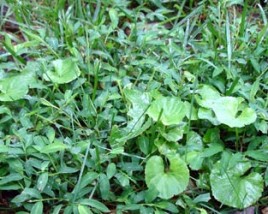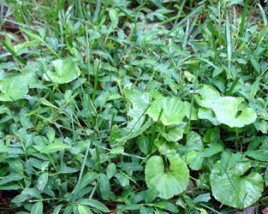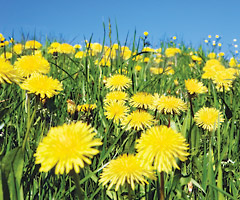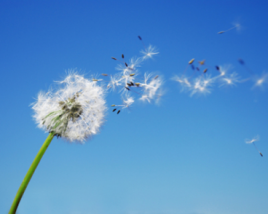How Weeds Get Into Your Lawn

That picture can haunt a homeowner’s dreams. If you have a lawn that you try to maintain, weeds are probably at the top of your list of things to worry about. They rob your soil of nutrients, choke out the grass that you actually want, and can turn a beautiful turf into an ugly, spotty mess. They’ll jump at every opportunity to take hold in your soil making your dream lawn into a nightmare. You may have asked yourself how these weeds got there in the first place. That, unfortunately, is a question with many possible answers. Let’s look to the dandelion for some answers.

How Weeds Get Into Your Lawn
The dandelion is one of many weeds that is lucky enough (lucky for it, not us) to have a taproot. A taproot is an enlarged root that grows downward into the soil with smaller roots that branch off from it. When you try to pull out dandelion taproots to get rid of them, you may think that this will end your weed woes by attacking the source. Good thinking, but if any part of that brittle root is left behind, it will regenerate and you’ll be seeing that yellow flower again soon. The roots are capable of reaching down 10 to 15 feet (usually only gets to 6 to 18 inches) so some of that taproot is likely to be left behind. Following the flower of a dandelion is the seed head which can produce around 180-400 seeds in its lifetime.

Dandelions
Many seeds from weeds are easily transported on a breeze. The dandelion seed is even equipped with its own parachute which will easily fly miles away from one neighborhood and land comfortably on your lawn. They can be sent through the air when they’re mowed down, raked, or just by walking through them. Seeds are also eaten by birds and small mammals like rabbits. When these animals leave their droppings, undigested seeds can sprout into new weeds. Certain seeds have small barbs which allow them to latch on to fur, clothes, shoes, etc. They travel until their hold is loosened and they fall off; making their home wherever they can. Weeds can also sneak their way into your lawn through inexpensive grass seed and almost any topsoil brought to a landscape. Sometimes seeds are in the soil for years before they germinate; some being present 30 or more years before they germination occurs!

Take care of your weeds!
Expecting a lawn that will never have weeds means you’re setting yourself up for disappointment. All is not lost though. Keeping your turf thick and healthy and soil moistened and nutrient-rich will most definitely help to reduce the amount of weeds you see. Treat weeds that do pop early to prevent them from become mature and harder to eradicate. Remember, the thicker and healthier your lawn, the harder it is for weeds to move in!
Contact the Top Lawn Care Company in PA, NJ & DE
Contact Green Lawn Fertilizing today for a free Customized Lawn Analysis. Our local approach to lawn care has made us top company for residents in: Pennsylvania, New Jersey and Delaware. Take advantage of our 2 FREE lawn care applications for a limited time only!